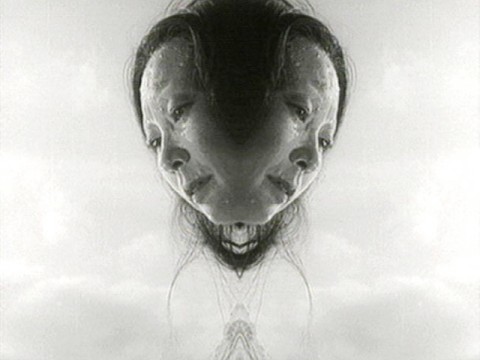Video artist and filmmaker Nicolas Provost (b. 1969, Ronse, Belgium) lived in Belgium and Norway before moving to New York in 2013, where he now resides. After studying at academies in Ghent, Belgium, and Bergen, Norway, and graduating in 1994, he spent several years in Oslo working as an illustrator, art director, and graphic designer. He began making short films in 1999 and moved to Brussels four years later. By then, his work was being exhibited in international galleries, museums, and festivals, including the Sundance Film Festival, at which he has won honorable mention twice, for _Papillon d’amour_ (2003) and _Suspension_ (2007). His first feature film, _The Invader_, premiered at the Venice Film Festival in 2011.
Despite living most of his life in Europe, much of Provost’s art acknowledges the international influence of Hollywood. On account of the pervasiveness of the film industry, his work largely pivots on viewers’ familiarity with cinematic grammar and conventions. Almost intuitively, or with the help of a soundtrack, we likely anticipate a chase scene when we see the camera moving through the bustling crowd of a Manhattan street. That expectation is what Provost’s films analyze, question, and frustrate.
For instance, his video _Gravity_ (2007) is a compilation of well-known cinematic kisses. An embrace between James Stewart and Kim Novak in _Vertigo_ is superimposed on that of Steve McQueen and Faye Dunaway in _The Thomas Crown Affair_, over that of Cary Grant and Eva Marie Saint in _North by Northwest_, among others. However, rather than allowing us to get caught up in their passion, Provost denies any pleasure by juxtaposing the frames with a stroboscopic effect. As the screen rapidly flashes between series of faces and figures, the glances and gestures of romantic scenes take on new meaning, coalescing into a horror flick. Nonetheless, Provost’s transformation ironically articulates the suspense and intrigue that underlie the original films.
_Storyteller_ (2010) also transforms the familiar. In a hypnotic seven-minute projection, the nighttime cityscape of Las Vegas effectively becomes a floating bejeweled spacecraft by means of a simple mirroring technique. Although the image is otherworldly, it includes certain details—signage, lighting, architecture—that reveal the actual site. While the casinos of Sin City might be banal or kitsch to many, Provost’s film presents them as a serene, stunning composition. Further, as in this and other works, duality is a major theme that suggests reinterpretation. That is, Provost suggests there is more than one way to see a story, image, or person. In so doing, his imagery wavers between fact and fiction, panic and pleasure, banality and sublimity.
Like The Strip-as-spacecraft that floats through _Storyteller_, the female protagonist of _Papillon d’amour_ also appears as a mirrored form that functions as a “veritable Rorschach test onto which the viewer projects his or her innermost hopes and desires.” Combining footage from Akira Kurosawa’s masterpiece _Rashomon_ with an affecting soundtrack, Provost presents a female figure that undergoes a “reverse chrysalis” before a group of male spectators. Taking a cue from the theme of the original film, there is no clear-cut interpretation or resolution of her activity. Indeed, her hysteria disallows onlookers to grasp, pin down, or project upon her. In that way, she seems to represent the enigma of love, or the search for an understanding of something impossible to understand, as she evokes the dual notion of the butterfly—a beautiful creature that also is a sign of anxiety and distress. _—Kanitra Fletcher_

